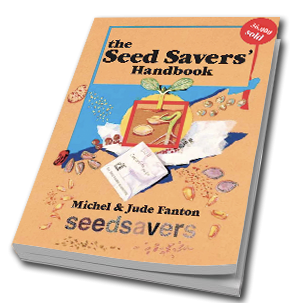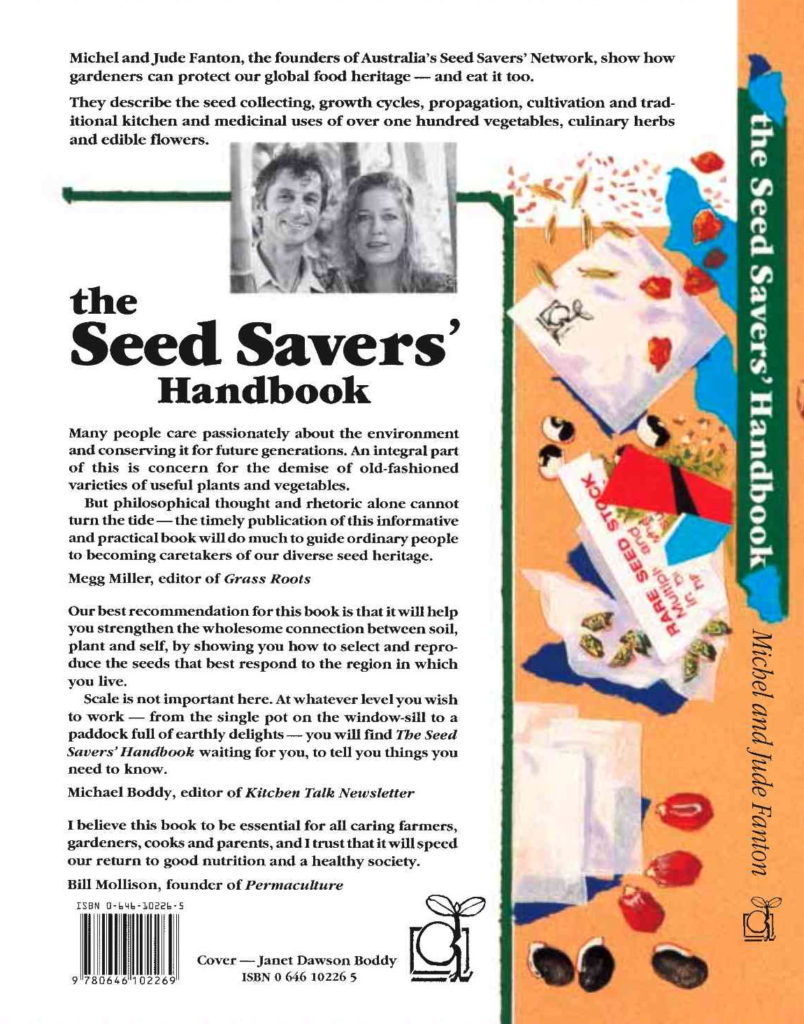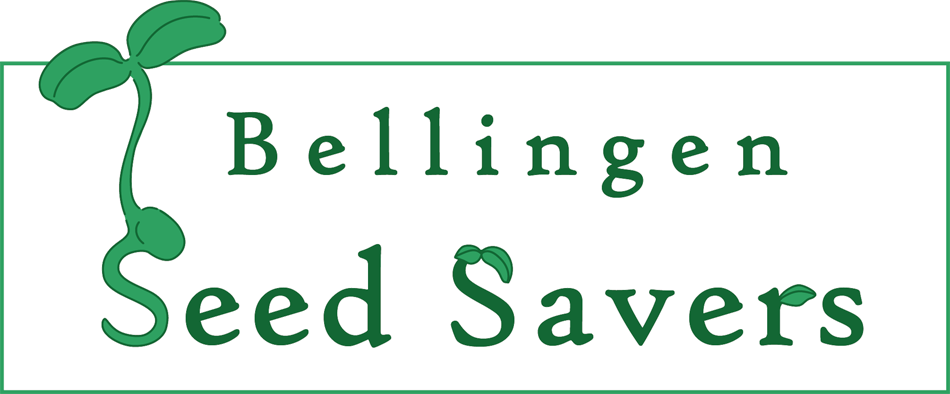Seed Saving Information
Locally adapted seeds, heritage seeds, heirloom seeds, non-gmo seeds, open pollinated seeds. These are the foundation of food security. These are the seeds you can plant, grow, save then plant, grow and save – again and again, reliably, for generations. These are the seeds that have kept us alive throughout history.
Seed Saving Basics
Labelling
Labelling seeds and plant material is an essential function of our local seed network.
Seeds and plants need to be labelled right through the seed production process from germination to seed drying and storage. Make sure you have clear labels in your garden and that this information is transported with harvested seeds to the seed drying, cleaning and storage areas.
It is always important to label seeds and plant material with at least this basic information:
- Varietal name
- Who produced the seed
- Location
- Harvest date
- Plant description, especially whether it is a bush or climbing plant
- Warnings, if applicable
Unlabelled and unrecognisable seed must be either thrown away or grown out to determine its identity.
It is best to use the generic form provided by Bellingen Seed Savers. Fill-in as much information as you can provide, especially plant description and uses. There are links to the form on the web site and on all newsletters. Look for SEED SAVING DETAILS towards the bottom of every newsletter. Fill-in the editable PDF form. Or print it out and fill it in by hand. Blank forms are also available with the sign-in sheet at all Bellingen Seed Saver gatherings.
Seed Selection
The best seeds typically come from the best plants. Be discerning with your seed plants. Observe plant characteristics through the growing season. Select seeds from disease-free plants that have desirable qualities. Qualities can include flavour, plant size, fruiting abundance, harvest time and resistance to pests and disease.
Be patient and wait for maturity. Seeds must be mature if they are going to germinate. They are mature when flowers, stems and pods have faded to a straw colour and are dry. Leave pods / heads with dry seeds on plants until they reach full maturity. In the case of fruiting bodies, a good rule of thumb is that when fruit is ripe or over ripe the seeds are ready to be collected. Fruit stem-colour and dryness can be a good indicator of maturity. Look for yellowing, straw, brown coloured dry stems. Try to harvest on a dry day. If bad weather looms, pull the entire plant and bring it indoors to ripen. Plants that crop over a long season produce their best seeds in mid-season.
Seed Cleaning
Ordinary kitchen utensils are suitable for either wet-cleaning or dry-cleaning seeds.
Fermentation and Wet Cleaning is used for seeds that come from moist fruiting bodies, such as tomatoes, cucumbers and melons. Scoop seeds and flesh into a container. Add a little water and leave to ferment at warm room temperature for a few days. This action helps rid seed of disease and dissolve the surrounding gelatinous pulp. Empty seeds onto a kitchen sieve and rinse with plenty of water. Spread seeds out in a thin layer on non-stick paper or a large sieve to thoroughly dry. For a quicker process, leave out the fermentation step. However, fermentation produced cleaner seed.
Dry Cleaning is used for seeds maturing on a dry seed head or in a dry receptacle – capsule, case, husk, pod or shell. Gently roll or crush heads / pods in an old pillow slip to separate seeds from other plant material. Empty onto a suitable-sized tray or sieve to remove debris by using winnowing, sieving and sorting methods.
Refer to the Seed Savers’ Handbook by Michel & Jude Fanton for further detail. This is an essential reference book for all seed savers. Contact our seeds coordinator if you want to buy a copy.
Seed Packing Basics
Details of Your Saved Seeds
Name of plant: common name i.e. Carrot
Variety: i.e. Dragon
Botanic name: i.e. Daucus carota
Brief description: i.e. purple carrots
Origin: where harvested i.e. Bellingen, Coffs, Dorrigo, etc
Date harvested: i.e. March 2013.
Sowing instructions: i.e. season, after frost, depth, spacing, sow direct or not etc.
Growing instructions: i.e. sun or shade, water needs, frost sensitive, needs trellis etc.
Uses & special notes: i.e. tasty eating carrot that’s purple on the outside & orange inside
Warning: if applicable
BSS Member Name: for internal records only, not published
Contact – email/phone:
Do you wish to ‘adopt’ this seed? Yes / No
That means, to commit to continue to grow this variety to make sure it stays in the area.
Download this as a text file or as an editable PDF file
How Many Seeds Per Packet?
10 seeds – very big, diffcult-to-find seeds or you don’t need many in a garden ie lima, broadbean
15-20 – bigger seeds – beans, pumpkin and other cucurbits – cucumber, zucchini, watermelon
25-30 – peas
30-40 – medium sized seeds – bok choy, beetroot, broccoli, cabbage, capsicum, chilli, eggplant, silverbeet, spinach
40-50 – smaller seeds or ones you have a lot of ie amaranth, basil, coriander, lettuce, mustard, onion, rocket, tomato
60-80 – very small seeds or crops that you need a lot of in the garden, or whose seeds are not always so viable ie carrots, cereals, poppy, radish, daikon
100 – seeds which need to be grown in large quantities for correct genetic diversity ie corn, sunfower
Download How Many Seeds as a PDF
Sow What When (Mid North Coast NSW)
All Year
spring onion
radish – daikon
lettuce
kale
Spring
lettuce
beans
capsicum
chilli
basil
eggplant
zucchini
okra
rosella
artichoke
tomato
spring onion
water chestnut
cucumber
corn
amaranth
dill
Summer
lettuce
beans
capsicum
chilli
basil
eggplant
zucchini
okra
rosella
artichoke
tomato
spring onion
water chestnut
cucumber
corn
amaranth
dill
Autumn
beans
beetroot
all brassicas – (cabbage broccoli cauliflower brussel sprouts collards, chinese cabbage, bok choy, pak choy)
broadbeans
carrot
celeriac
celery
coriander
fennel
garlic
kale
kohlrabi
leeks
lettuces
mizuna
onions
parsnip
peas
potato
radish – including daikon
rocket
salsify
silverbeet
snowpeas
spring onion
spinach
turnip
Winter
beetroot
all brassicas – (cabbage broccoli cauliflower brussel sprouts collards, chinese cabbage, bok choy, pak choy)
broadbeans
carrot
celeriac
celery
coriander
fennel
garlic
kale
kohlrabi
leeks
lettuces
mizuna
onions
parsnip
peas
potato
radish – including daikon
rocket
salsify
silverbeet
snowpeas
spring onion
spinach
turnip


The Seed Savers’ Handbook
The Seed Savers’ Handbook is a complete reference for growing, preparing and conserving 117 traditional varieties of food plants.
It was written in 1993 by Michel and Jude Fanton, founders of The Seed Savers’ Network, especially for Australian and New Zealand cultures. It is however applicable to all situations.
The Seed Savers’ Handbook has 180 pages with stunning original illustrations.
Purchase the book in the Seed Savers Network Shop
$AU32 Free Shipping or from our Seeds Coordinator for $25 with local pickup.
Michel and Jude Fanton wrote The Seed Savers’ Handbook from experience and with a great deal of research. It has been a reliable reference book not just on propagating and breeding your own vegetables, but also for how to grow and use both common (corn, tomatoes, beans, cabbages, etc.,) and unusual vegetables, such as tumeric, peanuts and several species of gourds. Included are many Asian and South American vegetables, herbs and spices.
117 plants referenced in the handbook:
– Amaranth
– Artichoke
– Asparagus
– Basella
– Basil
– Bean
– Beetroot
– Bitter Gourd
– Borage
– Broad Bean
– Brussel Sprouts
– Cabbage
– Calendula
– Cape Gooseberry
– Capsicum & Chilli
– Cardoon
– Carrot
– Cassava
– Cauliflower
– Celeriac
– Celery
– Celtuce
– Chervil
– Chicory
– Chilacayote
– Chinese Cabbage
– Chives
– Choko
– Collard
– Coriander
– Corn
– Corn Salad
– Cowpea
– Cucumber
– Dandelion
– Dill
– Eggplant
– Endive
– Eschallot
– Fennel
– Garland Chrysanthemum
– Garlic
– Garlic Chives
– Gourd
– Gramma
– Guada Bean
– Hibiscus Spinach
– Hyacinth Bean
– Jerusalem Artichoke
– Kale
– Kohlrabi
– Korilla
– Leek
– Lettuce
– Lima Bean
– Luffa
– Marigold
– Marjoram
– Mint
– Mitsuba
– Mizuna
– Mustard
– Mustard Greens
– Nasturtium
– New Zealand Spinach
– Oca
– Okra
– Onion
– Oregano
– Oriental Cooking Melon
– Pansy & Violet
– Parsley
– Parsnip
– Pea
– Peanut
– Peruvian Parsnip
– Poppy
– Potato
– Pumpkin
– Queensland Arrowroot
– Radish
– Rhubarb
– Rocket
– Rockmelon
– Rosella
– Rosemary
– Runner Bean
– Sage
– Salad Burnet
– Salsify
– Silver Beet
– Snake Bean
– Sorrel
– Soya Bean
– Spinach
– Spring Onion
– Squash
– Sunflower
– Sweet Potato
– Taro
– Tarragon
– Thyme
– Tomato
– Tree Onion
– Tumeric
– Turnip
– Water Chestnut
– Water Spinach
– Watercress
– Watermelon
– Wax Gourd
– Winged Bean
– Yam
– Yam Bean
